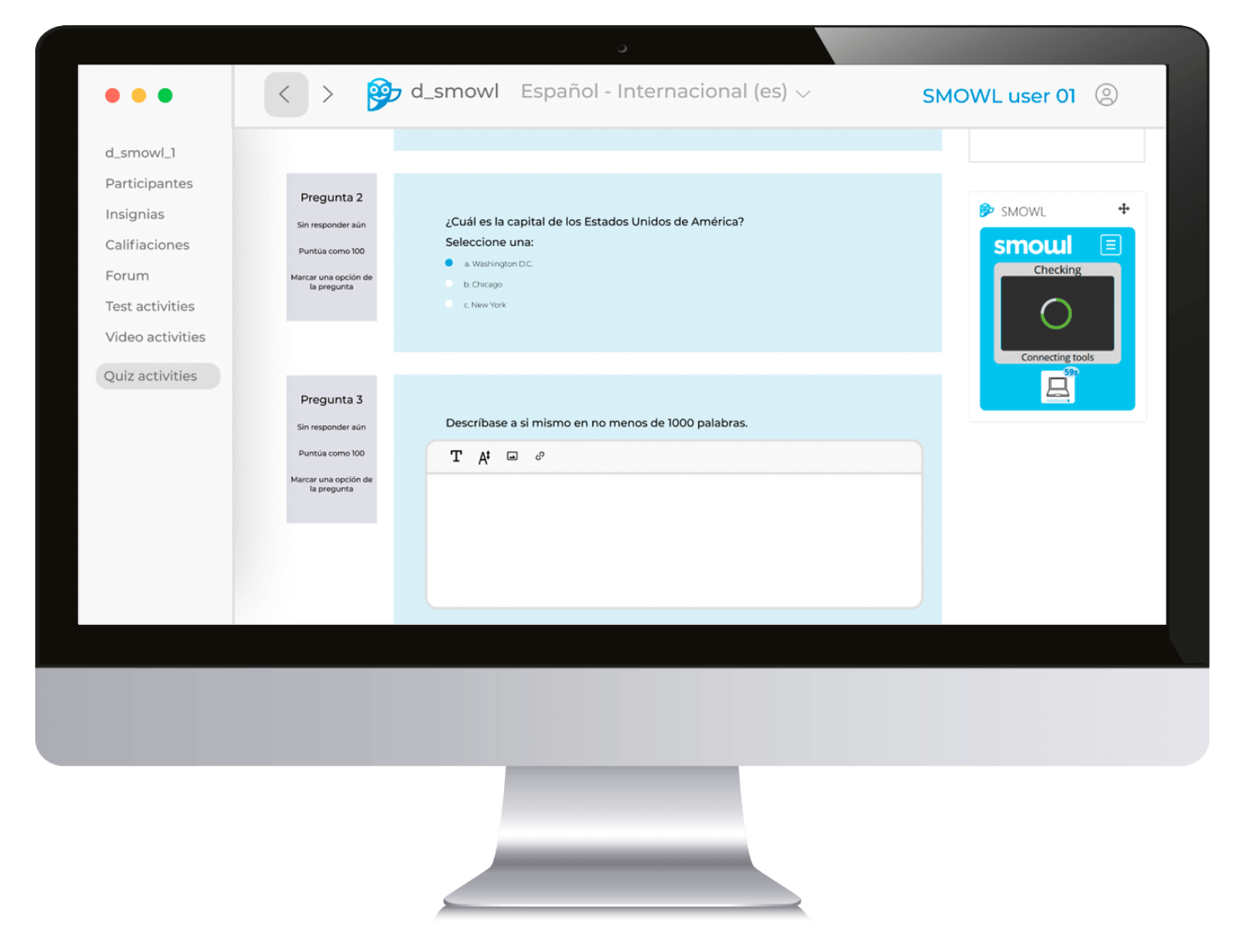Remote proctoring offers non-invasive online supervision that ensures the integrity of assessments.
This resource provides a solution to one of the major challenges of remote testing: fairness in evaluation. This is made possible through tools that detect fraudulent actions during exams.
In the current era, where e-learning is gaining increasing prominence, remote proctoring enables you to create secure and respectful environments for your examinees.
Since remote proctoring is now a necessary resource, we want to explain what it is and how it works to address any questions you may have.

What is remote proctoring?
Remote proctoring is the online, remote supervision of exams, tests, or personnel selection processes to detect potential fraudulent actions by the examinee.
This allows students to take exams or complete assessments from anywhere, as long as they have a computer and an internet connection. This tool focuses on two essential aspects:
- Verifying the identity of the person taking the test, preventing identity theft and fraud in online exams.
- Certifying that the person follows the established guidelines, without relying on external assistance. Remote proctoring ensures that no third-party involvement occurs and that prohibited resources, such as unauthorized internet use or documents and applications, are not accessed.
These principles are crucial to ensure fair, accessible, transparent, and integrity-driven remote assessments for all participants, while also increasing the efficiency of evaluation processes.
This type of monitoring must always respect individuals’ online privacy, guaranteeing non-invasive remote supervision.
Do you want to stay on top of the latest trends in eLearning, EdTech, and Human Resources?
Fill out the form to receive our weekly newsletter with industry insights from our experts.
How does remote proctoring work?
The functioning of remote proctoring depends on the specific resource you are using.
However, there are common elements to consider:
Combination of Monitoring Tools:
Remote proctoring can combine three elements for effective remote supervision:
- Webcam: Captures videos or images of the person taking the test to verify identity and monitor their actions or potential absences. Multiple cameras can be used for broader monitoring angles.
- Computer device: Detects actions, access to programs or documents, keyboard commands, and captures sounds.
- Human oversight: Analyzes and confirms alerts from remote proctoring regarding fraudulent actions during the test.
It’s important to note that professional monitoring systems adhere to the guidelines established by institutions that need to evaluate their students or candidates remotely based on pre-defined protocols.
Examinee registration in remote test proctoring
Examinees can register directly through a provided link or by downloading the required software on their computer, depending on the remote proctoring system you use.
Before entering any personal information, individuals must accept the system’s privacy policy, ensuring compliance with the General Data Protection Regulation (GDPR).
The registration process must also certify the person’s identity through biometric recognition techniques and document capture, if required by the educational institution.
Registration can be requested for each individual test or just once at the beginning, such as at the start of an online course.
Specifically, at Smowltech, we have developed proctoring plans that seamlessly integrate with the most widely used Learning Management Systems (LMS) like Moodle, Canvas, Blackboard, and Open LMS, among others.

Detection of fraudulent actions during the test
Innovative remote proctoring systems not only ensure digital security throughout the test but also use tools to detect unauthorized actions:
- Continuous activity monitoring throughout the test, possibly integrating artificial intelligence to prevent the use of prohibited programs and applications, automating processes.
- Webcam usage to verify identity and monitor access and to ensure the examinee remains present without third-party intervention.
- Browser blocking to prevent copying and pasting information, visiting unauthorized websites, and more.
These systems monitor both the person taking the test and their immediate surroundings.
Performance reports
In addition to remote supervision during the test, remote proctoring systems can provide registration reports and reports on detected incidents.
These data help streamline and improve evaluation processes.
Fraud detection
The proctoring system records any violations committed by the examinee. Once recorded, the evaluating entity analyzes these violations and takes appropriate measures.
Who rates the remote proctored test?
The proctored test is typically evaluated and rated by the institution or organization that administers the test. This evaluation is carried out by instructors, professors, or examiners who are responsible for assessing the test responses and assigning grades or scores to the examinees.

The proctoring service itself is primarily responsible for monitoring and ensuring the integrity of the test-taking process, such as verifying the identity of the examinee, detecting potential instances of cheating or fraud, and reporting any suspicious behavior to the institution.
However, the final assessment of the test, including grading and determining the results, is usually the responsibility of the educational institution or the organization that conducts the examination.
Remote proctoring with SMOWL
One notable feature of Smowltech’s remote proctoring systems is that they use image capture instead of video, reducing data consumption and streamlining information processing.
Choose user-friendly, secure, reliable remote proctoring solutions to enhance the reputation of your educational project with our proctoring plans.
Request a free demo to discover how SMOWL products can benefit your project.
8 interesting facts about proctoring
Fill out the form and download the guide where we cover everything about online monitoring and help you choose the best software.







